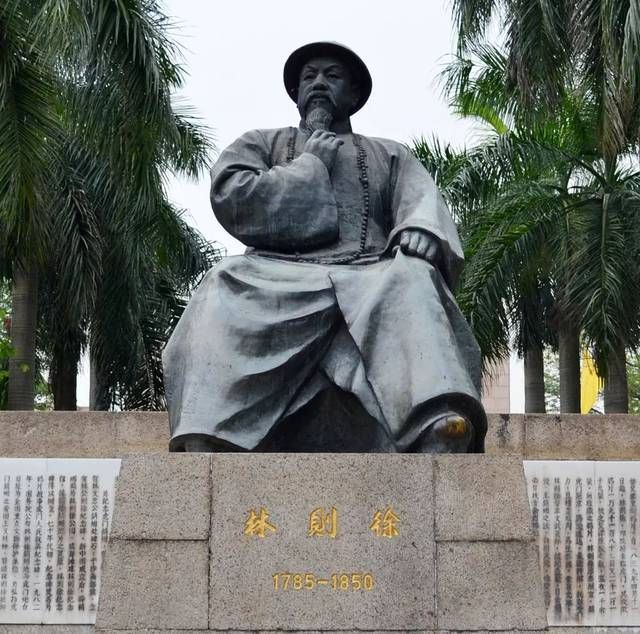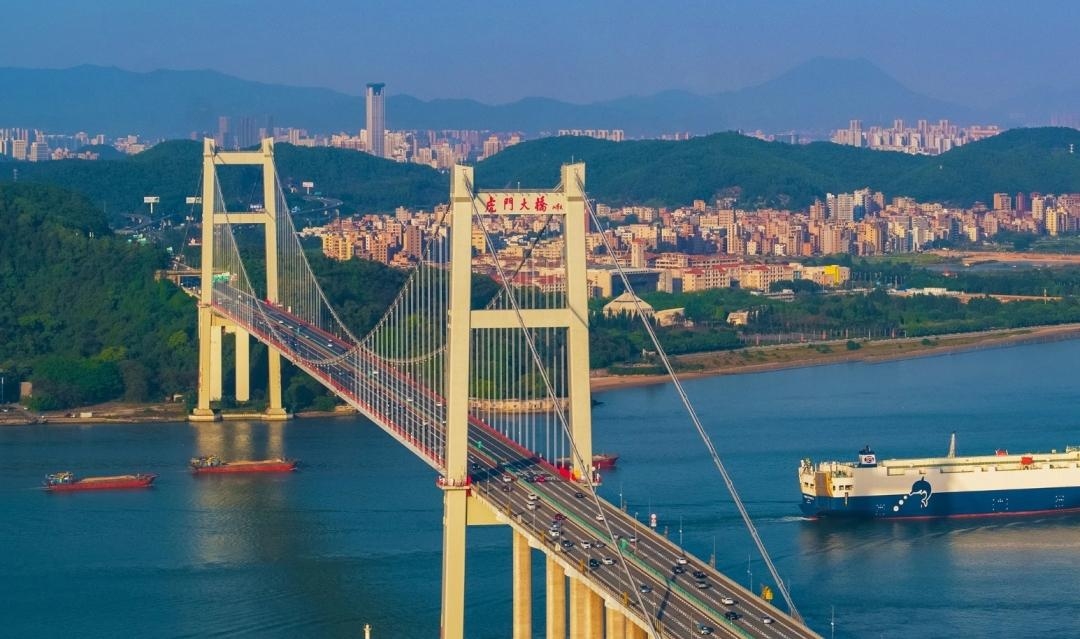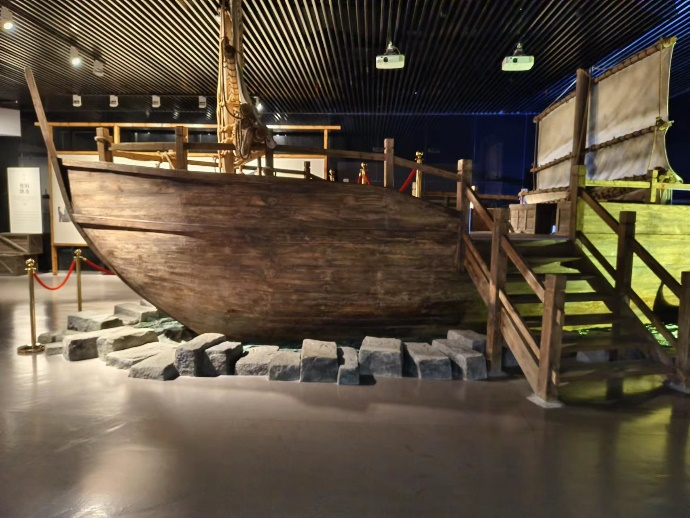Anyone who knows China knows of the Greater Bay Area. It’s a huge amalgam of nine cities and the two Special Administrative Regions(SARs)of Hong Kong and Macau. The region is a powerhouse in terms of economy. It holds more than 10%of the entire economy of China with a little more than 5%of China’s massive population and incorporates several of the world’s largest cities. Guangzhou with 18 million might be the largest, but then again, Shenzhen with 17 million registered residents might have more people living there–it’s hard to tell. Another city in the region is well-known in China but less well-known outside of China is Dongguan, where a mere 10 million people live.
Dongguan doesn’t get the same attention as its stupefying and mind-blowing Southern neighbor Shenzhen, it hasn’t got the same degree of fame as it’s historically famous Northern neighbor Guangzhou but in terms of history, in terms of personality and in terms of what you can do and what you can get from there, it’s definitely worthy of similar consideration.
Nowadays, getting to Dongguan is easy, even though I live on the opposite side of the Pearl River Delta. There’s a bridge, the Humen Bridge. The Bridge is a feat of engineering and a sight to be seen. It’s 3618m in length which makes it almost three times the length of the world’s most famous suspension Bridge, the Golden gate, at 1, 300m. I haven’t been on the Golden Gate but I have been on The UK’s longest, which is 2, 200m over the Humber River and Australia’s longest, the Macleay Valley bridge which is 3, 200m.
Humen Bridge.
Getting away from bridges and off this one into the Dongguan suburb of Humen, is what we’re going to do now. Dongguan is a place of great historical importance. We all know of and remember the Opium War, at least everyone in China does. It was a significant turning point in China’s fortunes and the start of what China calls the Century of Humiliation. The most important event and the catalyst to start the First Opium War was the destruction of over 2 million pounds of illegally imported opium into China by the Emperor’s personal Viceroy Lin Zexu on the Humen Beach;this was the deliberate destruction of over 1, 100 tons of a product used for smoking and many people assume that he burnt the illicit cargo. In fact, he did not, 500 labourers worked for 23 days mixing the drug with lime and salt before throwing it into the sea where it was dissolved and dispersed by the tides. Lin however was so upset by what he had been forced to do to the marine life, and he wrote a eulogy apologizing to the gods of the sea for polluting their realm. The town remembers this period with a museum dedicated not just to the event, but to the war and the repercussions of it.

the Statue of Lin Zexu.
Dongguan city is known as a manufacturing hub and it attracts foreigners by the thousands but a little-known fact about the city is that there were, until quite recently several, thousand foreigners from one country alone living in Dongguan. In the 1990s and 2000s, almost 50%of all the world’s shoes were made here, much of this industry has now moved to places like Cambodia and Vietnam but for many years, shoe manufacturing it was one of Dongguan’s largest for many years and the best artisans, the best leather workers and the people who know the most about this industry at the time, came from Brazil, so many thousands of them moved to and made Dongguan their home. Informal estimates are that there have been, over the years, more than 20, 000 Brazilians who have made Dongguan their temporary and, in some cases, permanent home.
Whilst Guangdong generally is noted for several different food specialties and Dongguan is no exception, the food there is great. It’s typically Cantonese food with such things as yum cha and dim sum but the city is not famous for one particular food, there is no notable food like Beijing has its duck or Chongqing has its hotpot, but what is noticeable is that there are a great many international restaurants. For example, presumably to cater for the many Brazilians in town, there are several Steakhouses and Brazilian restaurants throughout the city where visitors and locals can find some of the best foreign restaurants in China. Perhaps the record for longevity being held by Pizzeria Calzone Italian Restaurant which recently celebrated its 20th year of serving the community.
What’s interesting about this small Italian restaurant in a Chinese city is that its owner is not even Italian, he’s Portuguese, which, given that, in the time he’s been in business something like 20, 000 Portuguese speaking Brazilians have spent time in the city must have been a good thing. Most of us expats in China love Chinese food and will eat locally much of the time but, from time to time, it’s great to go to a place where the people know you and speak your language, Pizzeria Calzone is one such place. However, each time I’ve been there, with the exception of myself and the people I’m with, 100%of the customers are Chinese;staying in business for 20 years and presenting an international menu to a discerning customer base as most Chinese, and all Cantonese people are, means he must be doing something right!
Being known as an industrial region and a vital part of the economy of the Greater Bay Area, it’s easy to forget that Dongguan wasn’t always a hub of manufacturing, but the roots of trade and commerce have not been forgotten. Like most Chinese towns and cities, when we look closely, there is something quite unusual about Dongguan, we never expect to find a thriving business reviving an ancient trade from the days of the Silk Roads but here in Dongguan we do find exactly that. Nestled in Liaobu town we find something quite unexpected, an incense market and a modern museum dedicated to this trade. Equally as surprising is that Dongguan has not only a thriving international market for incense but has farms growing agarwood in a modern iteration of this ancient trade.
A replica of an old agarwood trading ship in the Museum.
Incense in China has a 3000-year history and one of the most popular, and expensive, sources of incense is agarwood, which was introduced to China almost 2, 000 years ago through the Ancient Silk Route. Agarwood has since been cultivated in many Chinese places including Hainan and Taiwan Islands but it is in Dongguan where we find the museum and a small but thriving industry growing agarwood trees and extracting incense from the trunks and branches. What surprises most people is the value of this industry. A kilo of first grade agarwood can fetch up to$100, 000 US Dollars but there is a problem, it’s not something that occurs naturally. To produce the fragrant wood, Aquilaria trees, which are now quite rare in the wild, need to be injured and the tree’s natural method of healing itself produces a resin to kill fungi created by the wound. This develops a strong scent which is not only useful in traditional medicines it’s widely used in the perfume and cosmetic industries.
The scent, known locally, in Cantonese language as Heung, is difficult to pronounce for foreigners and so was distorted slightly to become the historical reason and etymological origin of the name Hong Kong, literally meaning perfume(or incense)port.
Recognizing the value and also the environmental threats that the value of this tree creates, Dongguan has developed an industry to increase production of agarwood, while at the same time, maintain the health and reverse the declining stocks of trees available. Historically, agarwood production techniques meant chopping down all the trees of the Aquilaria family in the hope of finding a crop of agarwood inside. This method has decimated the populations of the tree in the wild. Now, at least in China, the trees are protected and there are moves to protect them globally.
Another aspect of Dongguan which can surprise the visitors is Xi Xi Ancient Town. We’re used to hearing of ancient towns in places such as Yunnan and Shanxi but it’s a surprise to know that there’s a small village which, in 2018, started the process of rejuvenation and is now a spectacular tourist destination.
Row upon row of traditional late Ming and Qing Dynasty homes have been restored and are now havens for artists and artisans. It’s not unusual to hear the sounds of some ancient musical instrument being played and then find it isn’t a recording, and it’s being played by one of the people making the instrument by hand in a small workshop.
There are coffee shops too, for the more modern traveler, and teashops for the more traditional visitor.
Something I love about China is the way the country handles problems and Xi Xi is a great example. A small village in a much larger city was being left behind, it seemed that urban growth was taking over Dongguan and modernization would be the way forward. But urban growth, which is so good for the economy has drawbacks. Some places are left behind as young people move out to find jobs in the industrial areas and older people are unable to keep up with maintenance of the historical buildings and environment. One solution might be to tear them down and build modern factories or other amenities so the region can profit from them.
In this case, Dongguan’s solution was to create a cultural and tourist industry based on high-quality renovation. But it isn’t just designed to attract international or even long-distance Chinese tourists, it’s a place of urban recreation, relaxation for people nearby, a place where locals can escape the hustle and bustle of their day-to-day life and find some relaxation as well as some history, culture and great food. Visitors from afar can stay in a simple guest house, or an international brand hotel, locals and visitors alike can enjoy a walk around the lake, partake of some snacks in food street, or simply relax under the shade of an ancient banyan tree sitting by a well which has been in use since the 13th Century.
While there, I spoke with an elder in the village. She told me how hard her life had been, she was sitting outside the home she had lived in for 64 years and where she’d brought up her five sons. One of the sons had now come home to live and was working in the village after more than 20 years away and this is the benefit we don’t see unless we delve deeper into the community. The project to renovate an ancient town had benefited this lady in more ways than one: part of her home was leased out to a business selling teas so her household income was now quite good;her son had been able to find work locally and come home to help her;his income and hers combined meant they were able to invest in new furniture, renovate the interior of the home and improve their lifestyles. She enjoyed sitting outside the home, chatting to her neighbours and the many visitors who came through on a daily basis. To most of us, that would seem like a perfect retirement!
Dinner in Xi Xi is easy. There is an abundance of food available but one thing that shouldn’t be missed is Guangdong roast duck. People in Beijing are not going to like to hear this but there is a better duck in China, at least there is in my opinion. Large succulent pieces of duck with a crispy skin full of flavor. It isn’t served with pancakes, as the Beijing, or Peking duck would be, nor is it carved and sliced as a western duck would be, it’s cut into large chunks, small enough to be picked up with chopsticks and large enough to fill your mouth with mouthwatering flavors.
Dongguan really is a city of surprises, when we expect nothing more than factories and factory workers, we find history, nature, craftsmen, artisans, restauranteurs from around the world and a variety of venues to relax and enjoy life.


